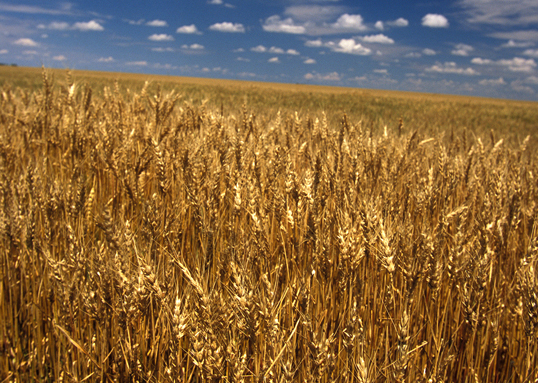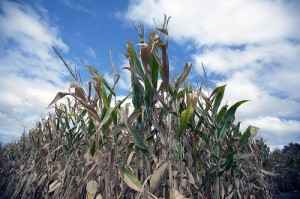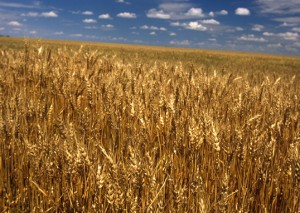
Food Security: A Catastrophe Mitigator
A drop in food security is the most devastating consequence of climate change. Innovation can create increasing crop yields and policies can make the food system more efficient, but no amount of determination or will power can overcome the biological imperative to eat.
 The World Health Organization defines food security as ‘when all people at all times have access to sufficient, safe, nutritious food to maintain a healthy and active life.’ It elaborates further by recognizing that in order for this to happen food must be available, people must be able to access it, and they must have sufficient knowledge of how to sanitize, prepare, and eat properly. The US Department of Agriculture goes one step further by asserting that food must be acquired in ‘socially acceptable ways,’ i.e. without stealing or scavenging. One in eight people lacked food security in 2012; around 870,000,000 people worldwide. Most of these people live in Asia and sub-Saharan Africa.
The World Health Organization defines food security as ‘when all people at all times have access to sufficient, safe, nutritious food to maintain a healthy and active life.’ It elaborates further by recognizing that in order for this to happen food must be available, people must be able to access it, and they must have sufficient knowledge of how to sanitize, prepare, and eat properly. The US Department of Agriculture goes one step further by asserting that food must be acquired in ‘socially acceptable ways,’ i.e. without stealing or scavenging. One in eight people lacked food security in 2012; around 870,000,000 people worldwide. Most of these people live in Asia and sub-Saharan Africa.
The world can be split into countries that are net food importers and net food exporters; although living in a food exporting country does not guarantee food security. A map of food importing and exporting countries clearly shows that most North and South American countries are exporters of food, while much of Africa and Asia are food importers. Notable Asian exporters include Indonesia, Malaysia, Vietnam, and Thailand. India, although a net exporter, is very close to crossing the line and being a net importer. Being a food importer does not mean that a country does not export food, nor is the opposite true. The United States, for instance, is a food exporter, exporting $141 billion in 2012, but also importing $102 billion, making it a net exporter of $39 billion.
The world’s food system is a delicate balance of imports and exports that could easily topple due to an external shock. Climate change could provide that shock around the world. A 3° F increase in temperature will significantly reduce crop yields. Over the last few years heat waves have hit Russia, the United Kingdom, and China, decreasing crop yields in those countries. Since temperatures in some areas have already increased by close to 2° F, soon some areas around the world could permanently lose the ability to grow as they do today.
 A wide scale food shortage in one area strains the global food system; shortages in several areas at once could break it. In the short term, mass migration in the search of food could lead to resource wars. This is different from the migration caused by changing coastlines and weather patterns because it is possible, but not guaranteed, that those people can be settled peacefully. Starving people, whose neighbors are also starving, cannot be resettled peacefully. In the long term, people will continue to starve until a new balance is achieved, in a sort of Malthusian logic.
A wide scale food shortage in one area strains the global food system; shortages in several areas at once could break it. In the short term, mass migration in the search of food could lead to resource wars. This is different from the migration caused by changing coastlines and weather patterns because it is possible, but not guaranteed, that those people can be settled peacefully. Starving people, whose neighbors are also starving, cannot be resettled peacefully. In the long term, people will continue to starve until a new balance is achieved, in a sort of Malthusian logic.
There are only two viable solutions that the United States should pursue to help; unfortunately rapidly turning back the effects of climate change immediately is impossible. First, the United States should become more efficient in its food management. Currently the United States wastes 40% of its food. By perfecting more efficient food management the United States can then export  surpluses to other countries, easing the strain on the global food system. Secondly, the United States should encourage the development and deployment of heat and drought resistant crops. This encouragement can be as simple as encouraging the planting of more heat tolerant plants, or as intensive as facilitating the study of genetically modifying crops. Already as an example, researchers at the University of Florida, funded by the National Science Foundation, have modified strains of wheat, rice and maze that actually increase their yields under hot environmental conditions by 38%, 23%, 68% respectively. Commercially produced corn increased its yield by 42% when treated with the same genetic modification. Investing now in crops able to survive higher temperatures and drought conditions will allow the United States and other nations to continue to feed humanity while dealing with the other effects of climate change.
surpluses to other countries, easing the strain on the global food system. Secondly, the United States should encourage the development and deployment of heat and drought resistant crops. This encouragement can be as simple as encouraging the planting of more heat tolerant plants, or as intensive as facilitating the study of genetically modifying crops. Already as an example, researchers at the University of Florida, funded by the National Science Foundation, have modified strains of wheat, rice and maze that actually increase their yields under hot environmental conditions by 38%, 23%, 68% respectively. Commercially produced corn increased its yield by 42% when treated with the same genetic modification. Investing now in crops able to survive higher temperatures and drought conditions will allow the United States and other nations to continue to feed humanity while dealing with the other effects of climate change.
The time to prepare for a crisis is before the crisis happens. Increasing food security makes it that much more likely that the solutions to mass migration and other climate related challenges will be peaceful. Better management of food stocks and investments in more productive heat and drought resistant crops can help. Once the global food network is broken it will be too late to fix it for those who will starve.





